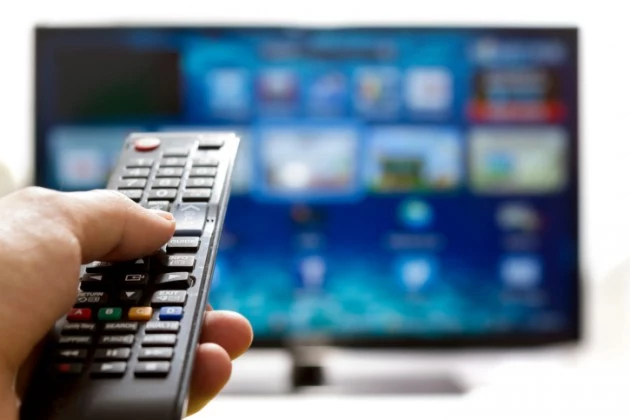

Christine (Dreyfus) has been divorced for a little while but she has a good relationship with her ex and together they juggle the responsibilities of their son together, focusing obviously more on Christine who the kid lives with. I'll start by saying the premise won't blow anyone off their ass. I think Julia Louis Dreyfus may finally have a shot at stomping out the Seinfeld curse. As far as I know it's doing pretty well in the ratings so far and I'm glad to hear it.

Seinfeld gave Louis-Dreyfus her start and she hasn't slowed down since.Ĭouldn't help but notice that nobody's commented on this show yet so I thought I would.
Annoying loud tv commercials scrutiny from series#
The brilliant Louis-Dreyfus first proved with this series that SHE could be the centerpiece and anchor that carries a show. It's no Seinfeld, but personally, I find it a lot more watchable than Veep. Unlike most shows, it doesn't settle for cheap jokes. When a show is so good it makes me actually thinks Wanda Sykes is funny, that's a keeper! LOL Old Christine is a very "quiet" comedy. Wanda Sykes was introduced in Season 2 as Christine's partner and eventual best friend Barb. and a couple of scene stealers in the "Mean Mom" characters Marley (Tricia O'Kelley) and Lindsay (Alex Kapp). The show also has "New" Christine, Richard's girlfriend, well played by Emily Rutherford. She also gets emotional support as well as babysitting help from her younger brother (deftly played by Hamish Linklater). Julia plays "Old" Christine Campbell, a newly divorced mother who raises her son jointly with her ex-husband Richard (wonderfully played by AoS star Clark Gregg), who she is still on good terms with. She actually won an Emmy for this role too, in addition to Seinfeld and Veep, making her one of the few actors who have won the award for a starring role in 3 major series. There's no question that Julia was superb. I thought this was one of the most sharp, clever, funny, re-watchable comedies that came out in the 2000s. The Associated Press contributed to this report.As someone who is a huge Julia Louis-Dreyfus fan and think that Elaine Benes was not only the best character on Seinfeld, but one of the greatest in TV history, I must be one of the few people that actually loved her immediate follow up series THE NEW ADVENTURES OF OLD CHRISTINE.

Fox declined to give the AP a comment, although Unsworth says the network has been rejecting ads that are too loud and getting advertisers to fix them. NBC has sent specifications to its commercial suppliers and has installed equipment to reduce the volume of loud ads. Since DG began monitoring sound levels this summer, the number of ads that were considered“too loud” have fallen from about 70 percent of all ads to roughly 30 percent, Unsworth says.Īlready, hundreds of TV stations, cable and satellite companies have updated equipment to comply, says Tim Carroll, founder and president of Linear Acoustic Inc., a leading maker of the equipment.įor its part, ABC and CBS say they’ve installed equipment at various television stations.

(Which begs the question, “Why did a new set of volume-controlling regulations have to be passed?”) In the months leading up to the FCC’s release of the new rules, advertisers were already turning down the noise because many broadcasters are now rejecting loud ads. “We think that the FCC struck the right balance,” says National Association of Broadcasters spokesman Dennis Wharton. How that’s supposed to help with the financial burden, we’re not entirely sure. If compliance with the rules places a financial burden on a company, the FCC will give it extra time–up to December 2014–to comply. It recommends practices set out in 2009 by the Advanced Television Systems Committee, a standards-setting body. If they’re too loud, distributors must adjust the sound levels before they can be aired. The FCC rules require TV distributors to set up equipment to monitor the average sound level of ads as they come in. “Everybody’s been trying to push the envelope using (digital) compression to make their spots as loud as they can,” Unsworth says. In a recent analysis, DG found that some ads were 10 times as loud as the programs they interrupted.


 0 kommentar(er)
0 kommentar(er)
